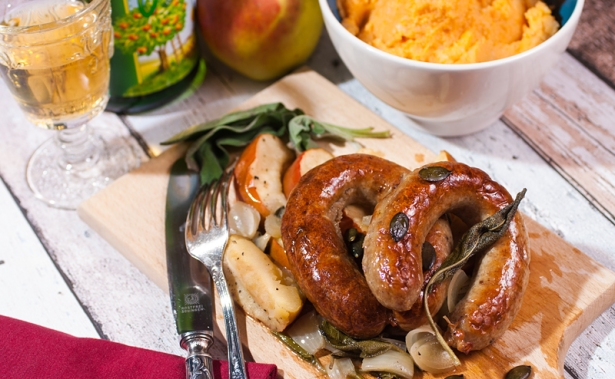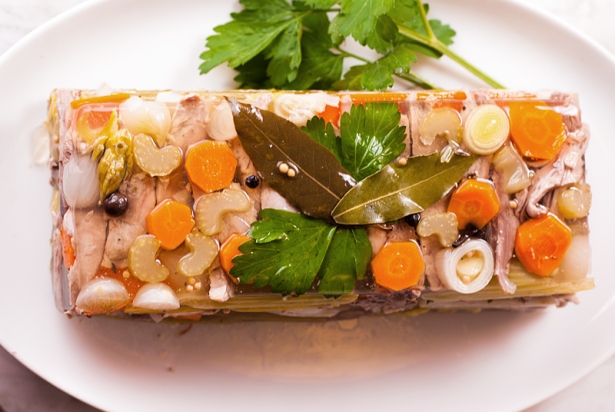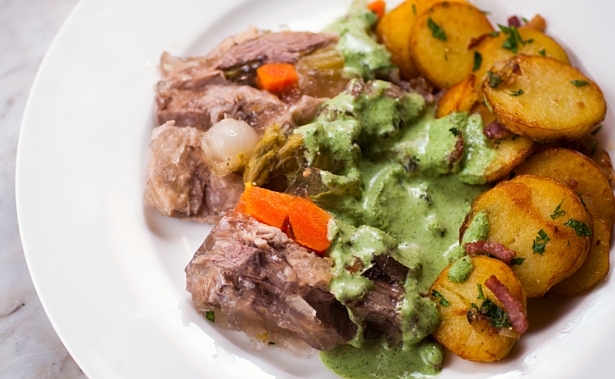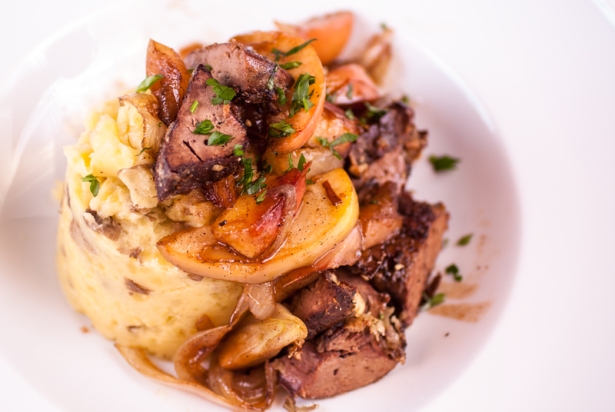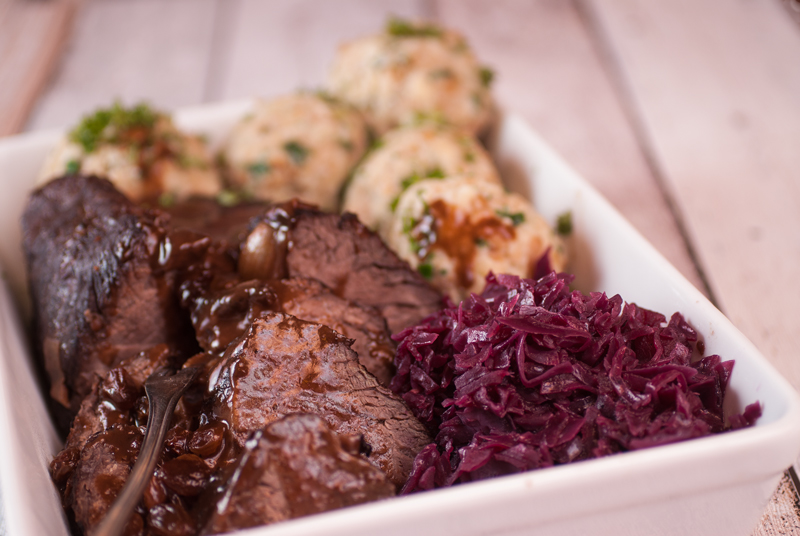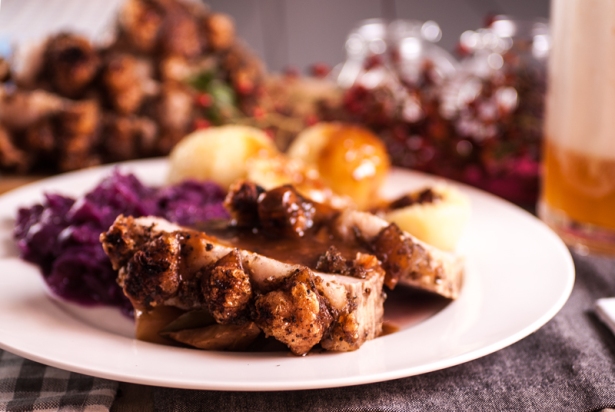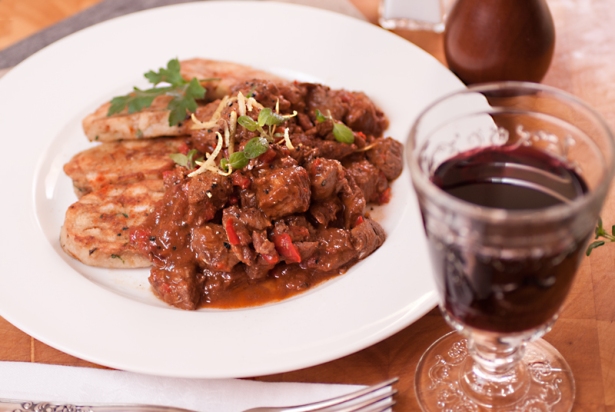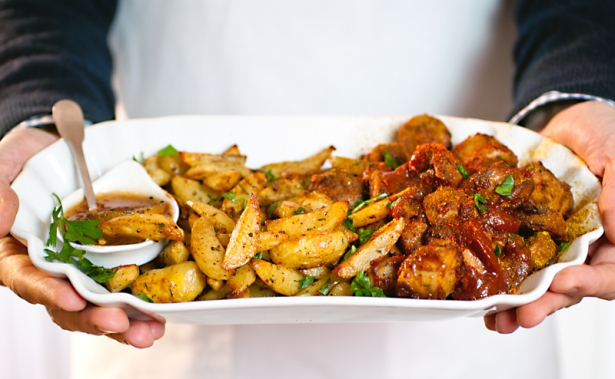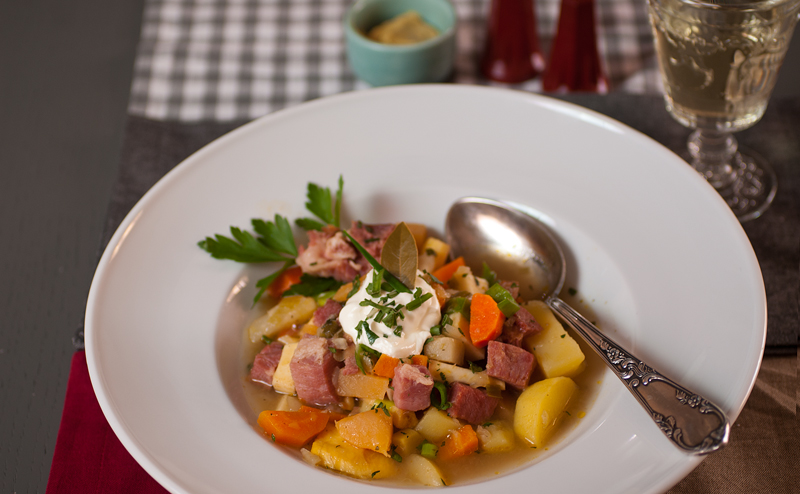There is more to German Cuisine than Bratwurst. This statement is the epitome of this blog. But a blog called “Morethanbratwurst” should probably boast at least one Bratwurst recipe. Well here it is.
With over 40 different types of Bratwurst in Germany, there is no single one that can be considered the best; although many Germans will have their favorite and probably disagree with this statement. My favorite is the Bratwurst Thuringian Style, which I will use as the basis for this post.
When it comes to Bratwurst, nothing beats the home-made Wurst. While making your own Bratwurst may strike you as strange when it is so easy to buy them cheaply at any supermarket, there are many arguments for the home made BW:
You know what went into it, you control the quality of meat used, you can spice it to your own desire and your will definitely be the star at the next BBQ you get invited to with plenty of people striking up a conversation just to get the recipe.
In a 2012 review conducted by a German consumer products evaluation organization, 19 different Bratwurst Brands were tested. Only 5 received the predicate “good”, 10 were satisfactory, 1 was acceptable, and 3 were unacceptable. Surprising results for a country that is known for its tendency for over-correctness and, well, Bratwurst. Another reason to try homemade Bratwurst.
All you need is a meat grinder and a sausage filler attachment. But more on that later.
When you order a Bratwurst at a German Bratwurst stand as a snack, it is traditionally served with or in a roll and with mustard. No more, no less.
Another typical combination is to serve them as a main meal with mashed potatoes and sauerkraut or apples sauce.
The Bratwurst will hardly ever be ‘novel cuisine’ but in an attempt to combine tradition with the modern, I came across a recipe that uses apples, sage, pumpkin seeds, and sweet potato mash. Thus inspired, I created a modified version, adding a bit more flavor through additional spices.
One important note, if you are a dog owner: When making your own bratwurst, lock the dog out of the kitchen! Letting the dog watch you making bratwurst while they can’t have any, definitely qualifies as pet cruelty!
Joking aside, making your own bratwurst is a bit messy. During the preparation, some of the raw ground pork is bound to hit the floor. Raw pork is potentially dangerous for dogs. Pigs can host the Suid Herpes Virus, which is harmless to humans. Thus, the slaughtered animals are only visually inspected for signs of the virus. While the virus is harmless for humans, if you feed your dog raw meat from an infected pig and the dog contracts the disease he/she will day in 1-3 days! There is no cure! So lock the dog out of the kitchen, really!
Outlining the importance of the Wurst in Germany there is a German expression: “Jetzt geht’s um die Wurst” (literally translated: “now it’s all about the Sausage”). In everyday life situations this means “now it is all or nothing”.
When going to the effort of preparing Bratwurst. Make as many as possible, You can easily take the base recipe below and double it. Once done, freeze the Wurst for the next BBQ. Works just fine. Just don’t forget to take them out of the freezer, the night before.
So here is how:
You will need:
- A meat grinder with sausage attachment
- 10m sausage casing for bratwurst size 25, 30, or 32. (I use the real thing: pork intestines). You can get it at the butcher’s supply shop or EBay
- 1.25 kg pork belly with high fat content (not smoked, deboned and without skin)
- 1.25 pork shoulder (deboned and without skin)
- 45g salt
- 7g freshly ground black pepper
- 5 g ground cumin
- 7g mustard seed
- 5 g nutmeg
- 2 TB dried Marjoram
- 1 medium clove garlic, finely chopped
- 1 medium onion, finely chopped
- 5 Eggs
- 1 TS sugar
- 100 g fine bread crumbs
- 50 ml milk or cream (if needed)
- 1-2 l dark beer
- 1-2 l chicken broth
- Kitchen string
- 6 Apples
- 100 ml dry apple cider
- Olive oil
- 2 cloves of garlic with skin
- 1 large onion
- 5 leaves of sage
- Freshly ground salt and pepper
- A sewing needle
- Kitchen string
Making the Wurst:
You will require a solid meat grinder and a sausage filler attachment. If you don’t have one, I suggest to have a look at EBay.
Take the sausage casing out of its packaging and prepare according to the packaging insert. If you are using pork intestine it usually needs to be rinsed under running water and the soak in cold water for half an hour.
While the sausage casing is taking its bath, prepare the meat. When selecting the meat, do not go for one that is too lean. In fact, for a juicy Bratwurst you will need a higher fat content otherwise the Wurst will end up dry.
Cut the 1.25 kg pork belly and pork shoulder into small pieces. And process through the medium grinding wheel.
After grinding all the meat, at the spices which are: 45g salt 7g freshly ground black pepper, 5 g ground cumin, 7g mustard seed, 5 g nutmeg, 2 TB dried Marjoram, 1 medium clove garlic, finely chopped, 1 TS sugar, 1 medium onion, finely chopped. Add the eggs and cream and mix well. If the meat dough is too moist you can balance it by adding some finely ground breadcrumbs.
Grind the meat a second time using a fine wheel. Your aim is to achieve a very fine, almost fluffy consistency. Again, use finely ground breadcrumbs and cream to balance the dough, sometimes it may be required to run it through the grinder a third time.
To make it easier to understand the process I dug up a video on YouTube. These two BBQ fans do a pretty good job and are very close to what the process I am suggesting here. Here is another good video that I like with additional tips.
Once you have filled the sausage, take a needle and prick the skin in several places so that any trapped air can escape during the cooking process. More is better here.
Now you have a sausage filled with raw meat. You could already throw it on the grill, but I suggest an additional step.
In a large cooking pot bring 1-2 l of dark beer and 1-2 l of chicken broth to a boil.
Reduce heat so the broth does not boil anymore, but stays hot. Poach the Bratwurst for 10 minutes. Take out and let cool off.
Now they are ready to go onto your charcoal grill. Or, if you want to try something a bit more sophisticated, read on:
Preheat the oven to 200 °C (180°C with Fan). In the meantime, quarter 6 apples and remove the core. Cut the apple quarters into smaller wedges.
Cut one large onions into small wedges. Crush two cloves of garlic and do not remove the skin. Rinse 5 leaves of sage.
Grease a large baking sheet and place the apples, onions, garlic and bratwurst onto the sheet. Spread sage and pumpkinseeds on top, drizzle with a generous amount of olive oil and season with salt and pepper. Add 100 ml of apple cider. Bake for about 25 minutes until the sausage has a nice brown color.
As a side, serve pumpkin –sweet potato mash, seasoned with butter, milk, nutmeg and salt. Serve with a cold beer, cider, or a dry white.
Now all you have do is awe your guest with you ability to make bratwurst and turn it into in a meal that has a touch of gourmet.
And Now:

